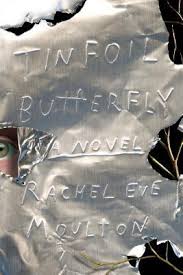White Hot Silence by Henry Porter
 Friday, September 13, 2019 at 7:13AM
Friday, September 13, 2019 at 7:13AM 
First published in Great Britain in 2019; published by Grove Atlantic/Mysterious Press on September 3, 2019
White Hot Silence is a sequel to Firefly. It might also be the second novel in a series (I hope so), but it is a true sequel in the sense that a reader should read Firefly to have a full understanding of the situation in which the characters find themselves.
Denis Hisami is concerned that TangKi, a company in which he has invested, may be engaged in money laundering. Its CEO, Adam Crane, has disappeared. As Hisami is raising his concerns with other investors, his wife Anastasia is kidnapped in Italy.
The agency that employs Paul Samson had been hired to investigate Crane, who appears to have rented a penthouse under the name Ray Shepherd. In the novel’s early pages, a body identified as Shepherd’s is found on the penthouse balcony, its face obliterated by large bullets. Whenever a face is missing, the reader will suspect that the body might have been misidentified.
Samson, Anastasia, and Hisami all met in Firefly. Samson fell in love with Anastasia before the novel’s end (rescuing a damsel in distress has that effect on fictional heroes). Now Anastasia is married to Hisami, who wants Samson to rescue Anastasia — again. The starting point in that endeavor is to understand why she was kidnapped. Samson works with (or against) the CIA and various other intelligence and law enforcement agencies, as well as some criminal organizations, as he searches for answers.
The premise is that American money is being used to influence European politics (a reverse of the traditional use of Russian money to influence American politics). The story’s political background is informed by Henry Porter’s experience editing and reporting news and opinion stories regarding European politics. The plot has an aura of authenticity that is too often missing from international thrillers.
The scheme that underlies the kidnapping involves the timely issue of European nationalism. The mysteries that Samson and his associates must unravel are complex but never confusing.
Porter mixes action scenes into a fast-moving plot. Some of the best scenes involve Anastasia, who proves to be a capable captive as she confounds her captors on a freighter bound for Russia and again in a Russian forest. Samson has his own share of the action, but no character is portrayed as a superhero, in the manner of too many “tough guy” action thrillers.
While the action is fun, some of the novel’s best scenes occur during Anastasia’s captivity, as she debates Russian and American literature (including the meaning of Huckleberry Finn) with her captor. I also enjoyed the return of Naji, who was a focal point in the first novel as a young teen. He enriches this story as a young adult by mixing political idealism with pragmatic strategy.
I thought Firefly was one of the best thrillers I read in 2018. White Hot Silence is nearly as good, placing it near the top of my 2019 list of favorites.
RECOMMENDED



